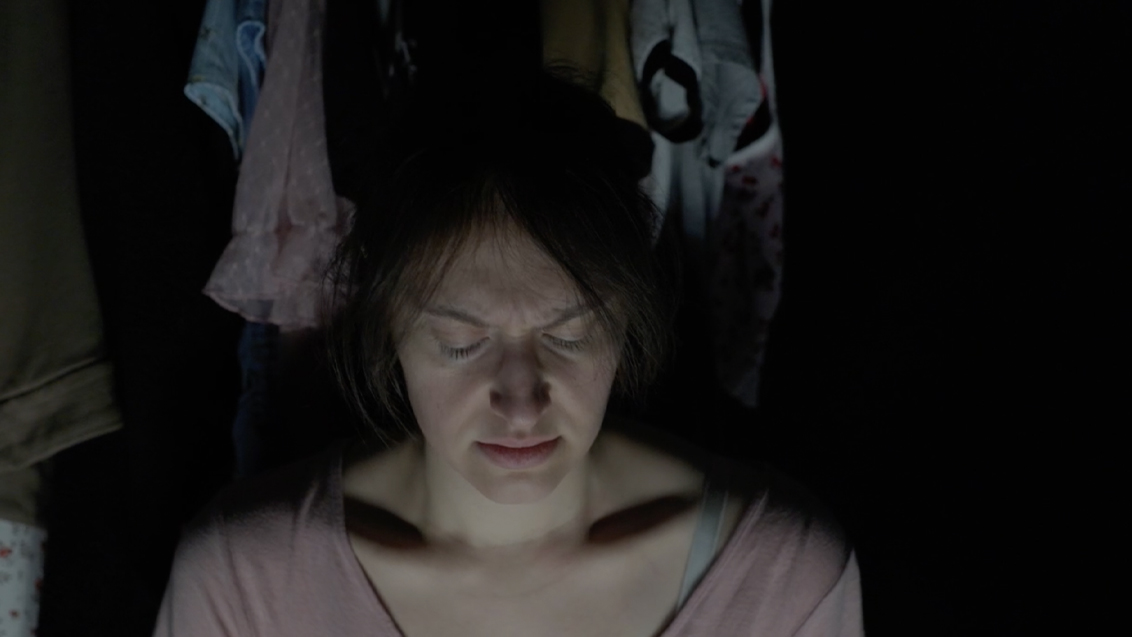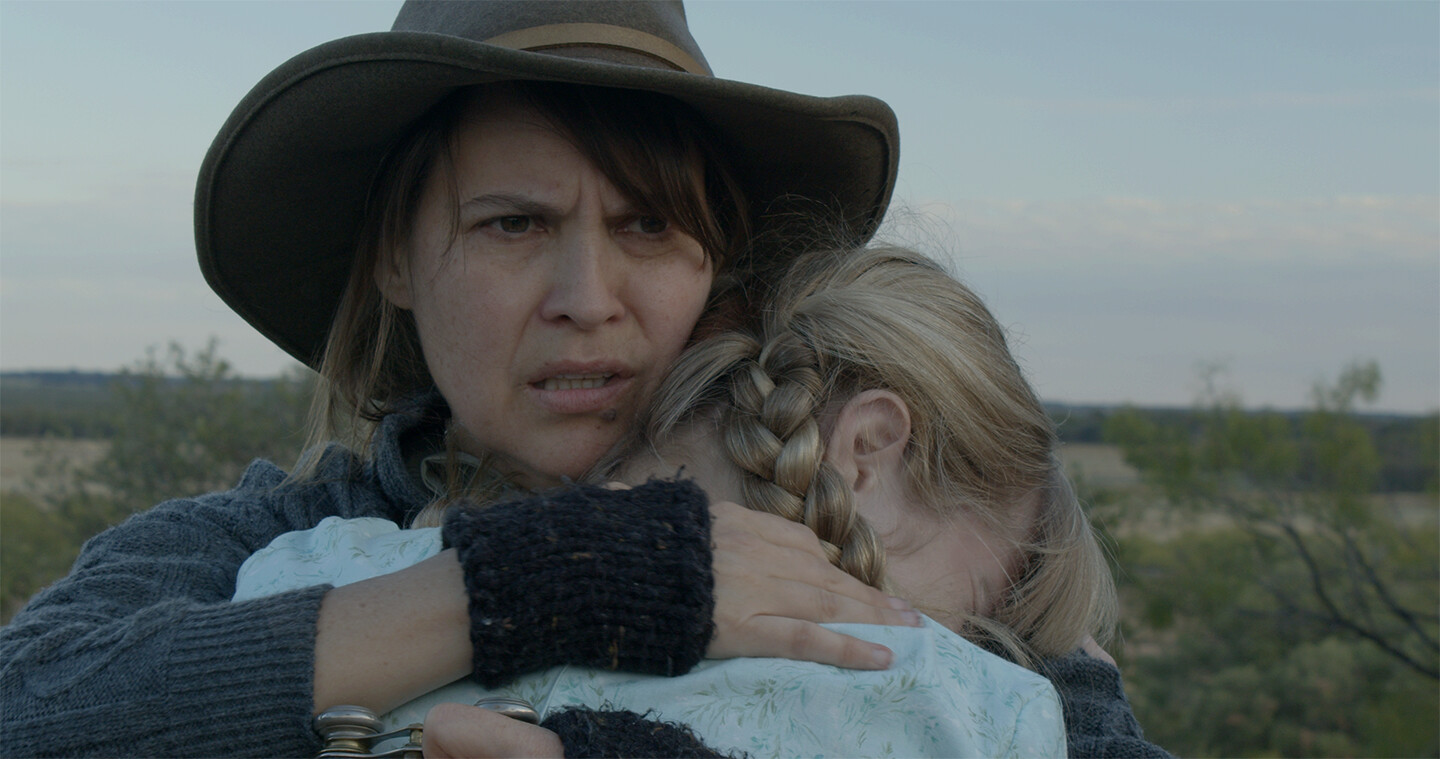Horror
Documented

Written by Brandon Young
Warning – This review may contain spoilers.
Documented follows the disturbing story of a father-son duo, Ted and Cole, who have spent years as serial killers, with Cole documenting their crimes through his camera. Known as “The Butcher,” the pair’s reign of terror spans the 70s and 80s. As Cole grows older, the central conflict arises—his desire for independence comes into direct conflict with his father’s need to keep their twisted partnership intact. The camera, which Cole uses to capture their gruesome exploits, becomes a key symbol of control, documenting not only their crimes but the evolving power struggle between father and son. The theme of generational trauma runs deep, and the psychological tension is palpable as Cole begins to question his future in the shadow of his father’s influence.
I found the concept of Documented fascinating, especially how it explores the darker sides of family loyalty and control. The relationship between Ted and Cole is at the heart of the story, and their conflict drives much of the tension. However, it’s hard to feel a true emotional connection to either character, given their psychopathic tendencies. While I appreciated the unique take on a father-son serial killer team, the script lacks that emotional depth that might make the audience care more about Cole’s internal conflict. The subplot involving Cole’s relationship with Amber had the potential to bring some complexity to his character but ended up feeling underdeveloped, which weakened the emotional impact.
I thought the screenplay was well-formatted overall, with few issues when it came to grammar, spelling, or punctuation. That said, the heavy focus on camera angles and placement really pulled me out of the narrative at times. I understand that the camera plays a big role in the story, almost becoming a character itself, but it felt a bit too directive. I found myself distracted by the overuse of camera descriptions, which detracted from the scenes rather than adding to them.
The story’s pacing felt solid for the most part, though there were moments where I wanted to know more about the backstory between Ted and Cole. Understanding more about how Cole got to this point—being raised by a serial killer—would have made his character arc even more compelling. I also felt that more could be done to develop the generational trauma theme. There are hints at Ted’s past and the violent legacy passed down, but expanding on that would give the story more emotional weight.
I think Documented is a gripping horror story with a unique angle. It’s a bold concept and I can see it working well during a table read, especially for audiences who are drawn to psychological horror and family conflict.
Horror
Hidden

Directed by Matthew P. Camacho
WARNING! This review contains spoilers.
“Hidden” is a short film that captures the terror of isolation, focusing on the idea that fear often strikes hardest when we’re alone. The plot centers around a woman named Jewel, trapped in a closet, seemingly hiding from an unseen presence. The story aims to explore how fear can become overwhelming when there’s no escape and how the mind can play tricks in such situations.
If I were to program this film, I’d place it in a screening block emphasizing its focus on psychological horror and the fear of the unknown. The film opens with impressive visuals—lighting is dynamic, creating a haunting atmosphere that sets the stage for a tense experience. The sound design starts strong, enhancing the unsettling mood with ominous echoes and reverberations that echo Jewel’s growing fear. Despite these strong technical elements, the film struggles to maintain its initial momentum, as the cinematography becomes repetitive, relying on medium-close shots with color shifts that add little to the narrative. Editing also feels unmotivated, with the pacing failing to build the kind of suspense expected from a horror short.
As for the story, Hidden presents a straightforward scenario of fear manifesting in isolation, but it’s hard to grasp the broader narrative or deeper meaning behind Jewel’s plight. While the film does capture the essence of terror in a confined space, it falls short of delivering a satisfying or clear conclusion. I found myself wondering about the nature of the threat, what Jewel was truly hiding from, and whether there was more to her backstory. Audiences looking for a more layered psychological experience may feel underwhelmed by the lack of story progression.
Personally, the film resonated with me on the basic level of fear—no one enjoys feeling trapped or threatened, especially in darkness. It does a good job of encapsulating that raw, uncomfortable emotion. However, without a clearer plot or deeper character development, it’s hard to maintain that connection throughout. Hidden succeeds in capturing the initial fright but struggles to sustain its impact beyond that moment.
Fantasy
Artifex

Directed by Alan Lucchetti
WARNING! This review contains spoilers.
“Artifex” tells the story of a modern-day Renaissance man who embarks on a quest to uncover the truth about his mysterious condition, all while keeping it hidden from those closest to him. As the protagonist dives into this quest, he finds himself at the crossroads of history, myth, and the supernatural. The film sets an intriguing tone, combining elements of drama and thriller with a sense of ever-present darkness.
If I were to program Artifex at a festival, I’d likely place it in a screening block called “Shadowed Realms” or “Dark Echoes,” highlighting its themes of lurking danger and hidden truths. The sound design plays a crucial role in maintaining suspense, keeping viewers engaged with a sense of impending doom. Lucchetti’s eye for detail is evident, with strong visuals that enhance the story’s dark tone. Close-ups effectively draw attention to key dialogue moments, like the intense scene with the old man in the editing room. The lighting, especially in the opening car wash scene and the sound studio, plays with shadows in a captivating way, adding depth to the atmosphere. However, the use of artistic visuals during dialogue feels more distracting than enhancing, breaking the immersion.
In terms of story, Artifex follows two friends whose bond is tested when one steals a mystical necklace that amplifies the wearer’s voice and grants an almost invincible feeling. The two eventually reconcile, but the film’s narrative lacks clarity. Key elements, such as the significance of the necklace or the protagonist’s motivations, remain unclear. I found myself puzzled by what the main character hoped to achieve by breaking into the house, as well as the purpose of the burning man’s presence. The reconciliation between the friends feels oddly casual given the stakes, leaving me unsure of the protagonist’s emotional journey.
On a personal level, Artifex didn’t resonate deeply with me, mainly due to its confusing plot and lack of narrative momentum. While the film offers some stunning visuals and a haunting atmosphere, the story’s repetitions and minimal conflict kept it from fully engaging me. Despite these issues, the film might appeal to viewers who enjoy visually driven, mood-centric stories. Overall, Artifex presents an ambitious blend of thriller and supernatural drama, but it struggles to deliver a coherent story that matches its atmospheric style.
Drama
Wildcat

Directed by Laurie Powers Going
Warning – This review may contain spoilers.
Wildcat tells the story of Clara (Brenda Hattingh Peatross) a determined mother searching for answers after her husband, Sam (Johnny Chops), and daughter, Dottie (Elle Graper), mysteriously disappear. Set in early 1900s Texas during the oil boom, the film weaves themes of desperation, isolation, and the supernatural as Clara stalks the crew Sam worked with, believing them responsible for her family’s disappearance. The narrative takes a darker turn when Dottie suddenly reappears, but with something unsettling about her. Throughout a long, tension-filled night, Clara and Otis, the oil well owner (Adam Kitchen) come face to face, while a malevolent force toys with them.
The film effectively builds suspense and I found Clara’s desperation to be compelling as Peatross delivers a strong performance that carries the weight of her character’s emotional turmoil. Her portrayal of a mother driven by grief and anger anchors the film’s tension. However, the story leaves some critical gaps. There’s no clear explanation about how long Sam and Dottie have been missing or what circumstances led to their disappearance, which makes it harder to connect deeply with Clara’s quest. Dottie’s ghostly return, while eerie, lacks the necessary backstory to make her presence feel fully justified within the narrative, which diminishes the emotional impact of the film’s conclusion.
The sound design creates a tense atmosphere especially with the ominous noises that heighten the sense of dread. However, the song choice at the very end doesn’t fit with the rest of the film’s tone. The cinematography misses the opportunity to fully showcase the vast, desolate plains of Texas, which could have deepened the themes of isolation and loneliness. While the editing was uneven in sustaining the horror aspects, there are standout moments, particularly the scene where Otis throws a knife at Dottie’s ghost, a sequence that is both chilling and well-executed.
The performances were solid with Brenda Hattingh Peatross bringing a strong sense of intensity to Clara, and Adam Kitchen’s portrayal of Otis offering a grounded counterbalance to her increasingly frantic behavior. Johnny Chops brings a subtle but important layer to Sam’s backstory through flashbacks, while Elle Graper as Dottie brings an eerie, unsettling presence to her ghostly role.
Wildcat struggles to fully connect due to its lack of clear backstory and character development. The plot feels disjointed at times, and the motivations behind certain supernatural elements remain unclear. The final scene, while visually striking, doesn’t carry the emotional weight it could have if the film had done more to build the relationship between Clara, Sam, and Dottie.
Wildcat explores themes of desperation, grief, and isolation within the framework of a thriller set in the Texas oil boom. While Laurie Powers Going delivers a suspenseful short, and the cast, particularly Brenda Hattingh Peatross and Adam Kitchen, bring strong performances, the film leaves too many questions unanswered. I feel audiences seeking a slow-burn thriller may appreciate the tension. I just wanted more backstory and deeper character connections. Still, its worth a watch!










